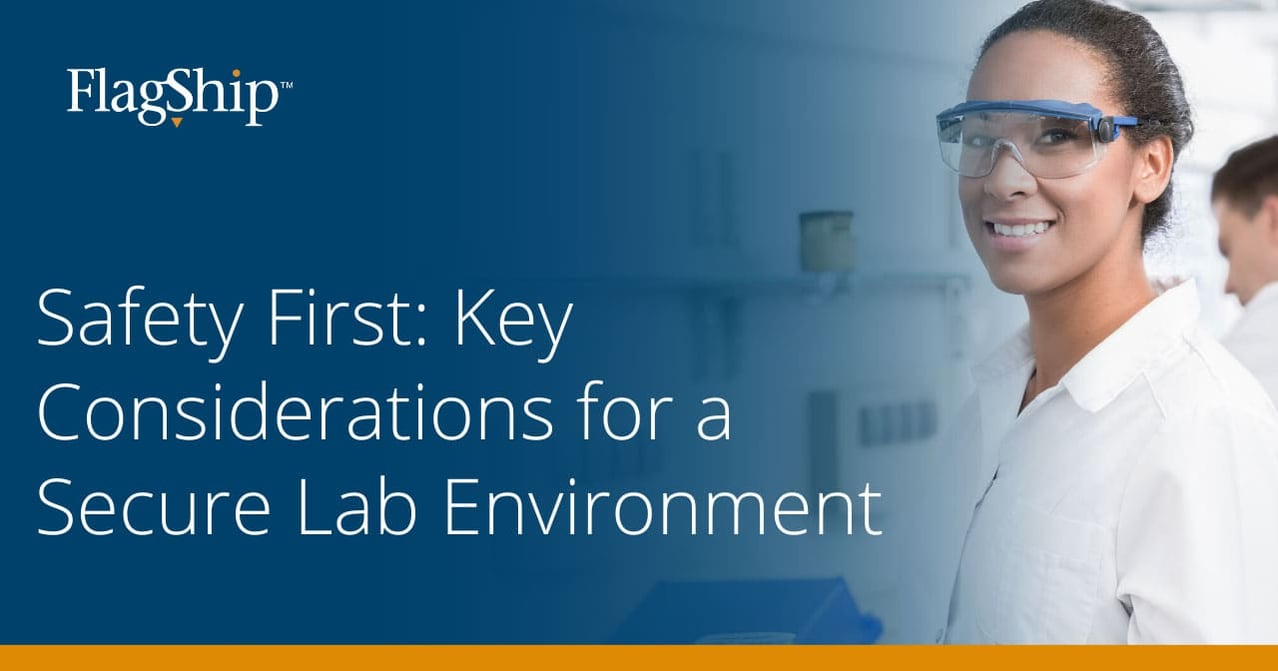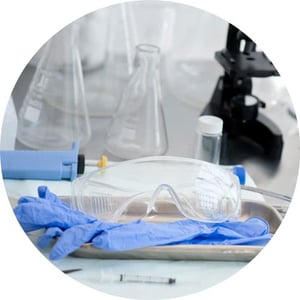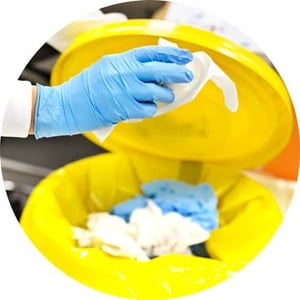
Laboratories are dynamic environments comprising various hazardous materials, chemicals, and equipment. Without proper safety measures in place, you significantly increase the risk of accidents, injuries, and even life-threatening incidents.
Not only is lab safety essential to the protection of your personnel, but it also ensures that experiments are conducted in a controlled and reliable manner.
By conducting regular training and adhering to safety protocols, you can mitigate your safety risk and guarantee the credibility of your research. In this blog post, we outline key safety considerations for lab workers.
Personal Protective Equipment
 Personal Protective Equipment (PPE) refers to specialized gear and attire designed to protect individuals from potential hazards, injuries, and exposure to harmful substances. In labs where researchers handle hazardous materials, chemicals, and biological agents, wearing appropriate PPE is crucial to personal safety.
Personal Protective Equipment (PPE) refers to specialized gear and attire designed to protect individuals from potential hazards, injuries, and exposure to harmful substances. In labs where researchers handle hazardous materials, chemicals, and biological agents, wearing appropriate PPE is crucial to personal safety.
By serving as a barrier against potentially harmful substances, protective clothing helps reduce the chance of chemical burn, skin irritation, inhalation of toxic fumes, and eye injury. Examples of protective clothing include:
- Lab coats
- Gloves
- Goggles
- Face shields
- Respirators
PPE requirements vary greatly based on the specific hazards present in the lab. It’s important that you understand the risks associated with your research and facility.
Chemical Safety
Proper storage and handling of chemicals is another key component of lab safety. Chemicals should be stored in designated areas, away from incompatible substances, and in accordance with specific requirements such as temperature control and ventilation. Furthermore, containers should be labeled with pertinent information, including the chemical name, hazard warnings, and date of receipt.
 Your lab also needs a well-defined emergency response plan that can be initiated in the event of a chemical emergency. This plan should include communication protocols, evacuation routes, assembly points, and contact information for emergency services.
Your lab also needs a well-defined emergency response plan that can be initiated in the event of a chemical emergency. This plan should include communication protocols, evacuation routes, assembly points, and contact information for emergency services.
Equipment and Instrument Safety
The safe operation and handling of equipment is essential to maintaining a smooth-running lab. Personnel should receive training on the proper use and operation of specific equipment and instruments, including glassware and sharp objects.
For example, glassware should be inspected for cracks, chips, or other damage that could compromise its integrity before use. Safe handling techniques, such as using heat-resistant gloves or tongs when working with hot glassware, reduce the risk of burns or cuts. Sharp objects such as needles, scalpels, and razor blades should also be handled with extreme caution.
Of course, routine inspection is the best way to identify any potential equipment issues. Regular calibration and testing of instruments also help ensure accurate measurements and reliable data. Additionally, following manufacturer guidelines for maintenance and scheduling routine servicing can extend the lifespan of equipment and reduce the risk of unexpected failures or hazards.
A successful lab relies on well-defined processes to ensure the safety of its personnel. Your lab should have step-by-step instructions for handling hazardous materials, operating equipment, conducting experiments, and responding to emergencies.
Flagship Lab Services introduces the people, processes, and data your lab needs to achieve both safety and quality control. Not only do we offer expertise in developing SOPs and safety measures, but we also provide valuable data insights to facilitate evidence-based decision-making and continuous improvement. For more information about our cutting-edge lab services, visit our services page.





Leave a Comment